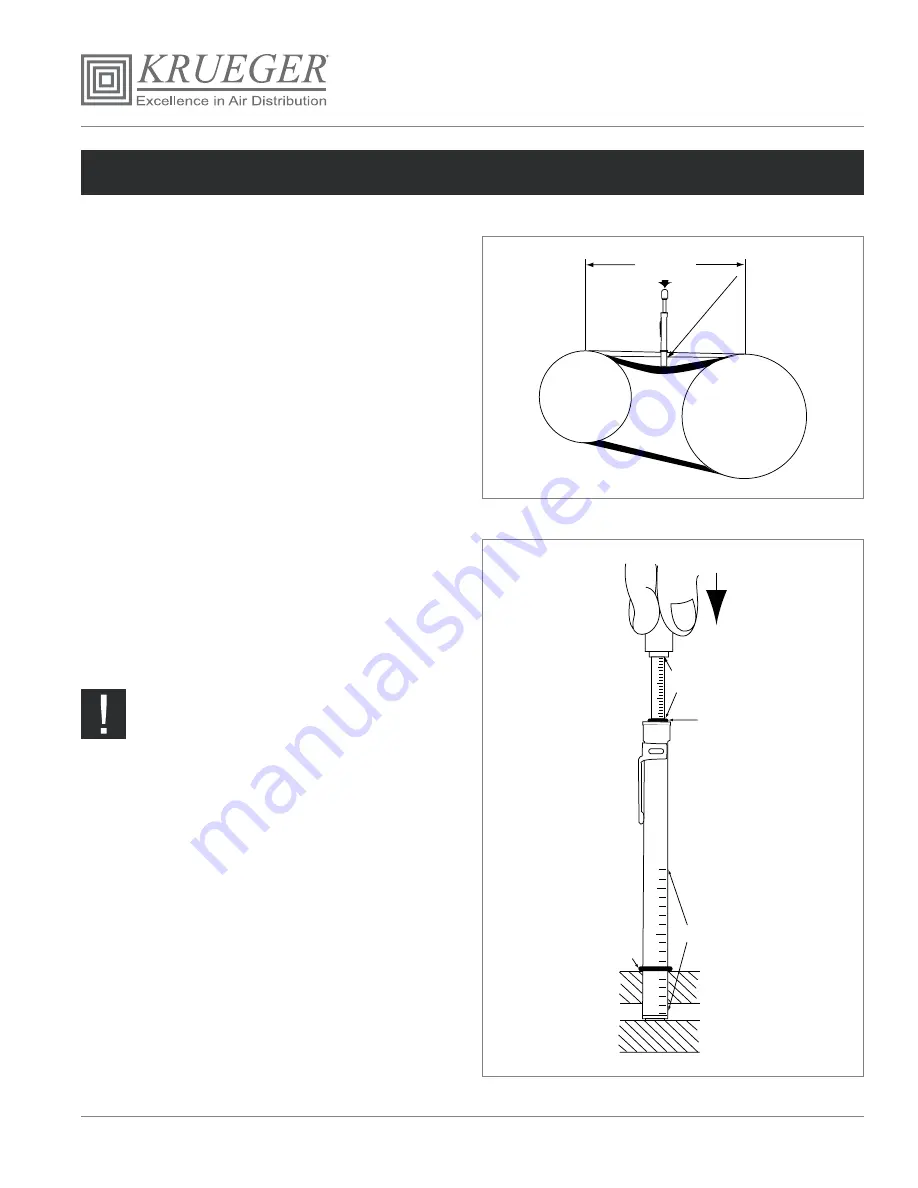
KAH Operation & Maintenance Guide
Page: 39 of 88
Krueger | 1401 N Plano Rd | Richardson, TX 75081 | 972.680.9136 | [email protected] | www.krueger-hvac.com
SECTION 3 - MAINTENANCE (CONTINUED)
Checking Belt Tension
Check the belt tension. It is normal for belts to loosen after
start-up or replacement. The new belt will run in or take
a set by seating slightly deeper into the grooves of the
sheaves. Recheck tension after one day, and again after
three days.
1. Measure the belt span as shown in Figure 37
(right).
2. Position bottom of the large O-ring on the span scale
at the measured belt span as shown in Figure 38
(right).
3. Set the small O-ring on the deflection force scale to
zero.
4. Place the tension gauge squarely on one belt at the
center of the belt span. Apply a force on the plunger
and perpendicular to the belt span until the bottom of
the large O-ring is even with the top of the next belt
or with the bottom of a straight edge laid across the
sheaves.
5. Remove the tension gauge and read the force applied
from the bottom of the small O-ring on the deflection
force scale.
6. Compare the force you have applied with the value
given on the drive kit data tag as shown in Figure 34
on page 37.
CAUTION -
Never use excessive tension because
this could result in damaging the bearing, motor
pulleys or motor base. Refer to the drive label on
the fan housing for specific details on tension.
Squealing belts during starting is caused by
slipping belts that are not tensioned properly.
FIGURE 37 - BELT TENSIONING
BELT SPAN
SPAN LENGTH
DEFLECTION
FIGURE 38 - BELT TENSIONING GAUGE
15 20 25 30
50
100
1
50
DEFLECTION
FORCE SCALE
SMALL
O-RING
SPAN SCALE
LARGE
O-RING
INCHES of SPAN







































